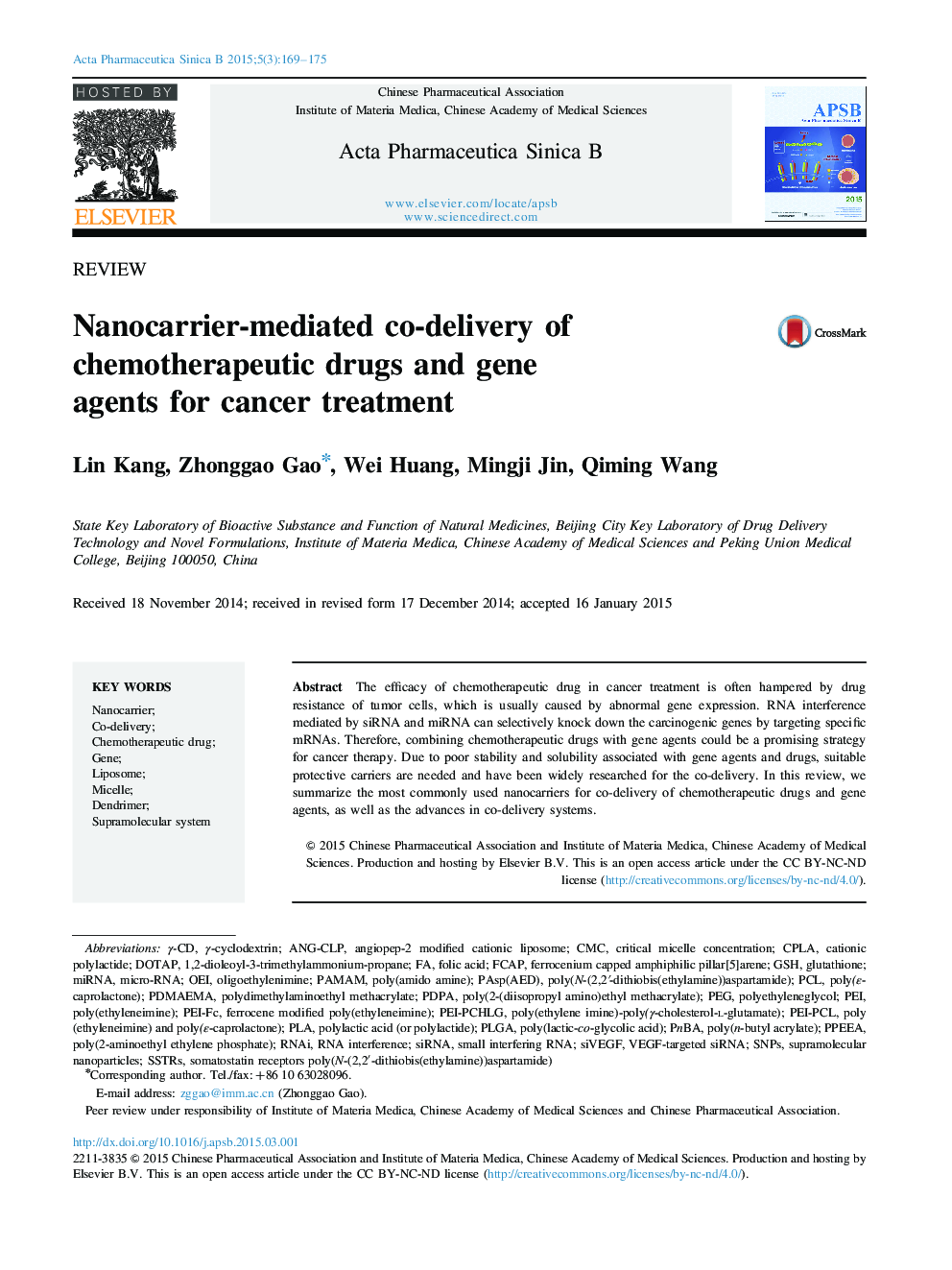| Article ID | Journal | Published Year | Pages | File Type |
|---|---|---|---|---|
| 2474528 | Acta Pharmaceutica Sinica B | 2015 | 7 Pages |
The efficacy of chemotherapeutic drug in cancer treatment is often hampered by drug resistance of tumor cells, which is usually caused by abnormal gene expression. RNA interference mediated by siRNA and miRNA can selectively knock down the carcinogenic genes by targeting specific mRNAs. Therefore, combining chemotherapeutic drugs with gene agents could be a promising strategy for cancer therapy. Due to poor stability and solubility associated with gene agents and drugs, suitable protective carriers are needed and have been widely researched for the co-delivery. In this review, we summarize the most commonly used nanocarriers for co-delivery of chemotherapeutic drugs and gene agents, as well as the advances in co-delivery systems.
Graphical abstractCombining chemotherapeutic drugs with gene agents could be a promising strategy for cancer therapy. Four major types of nanocarriers to co-delivery gene and chemotherapeutic drugs were reviewed, including (a) cationic liposome, (b) micelle system, (c) dendrimer system, and (d) supramolecular system.Figure optionsDownload full-size imageDownload as PowerPoint slide
